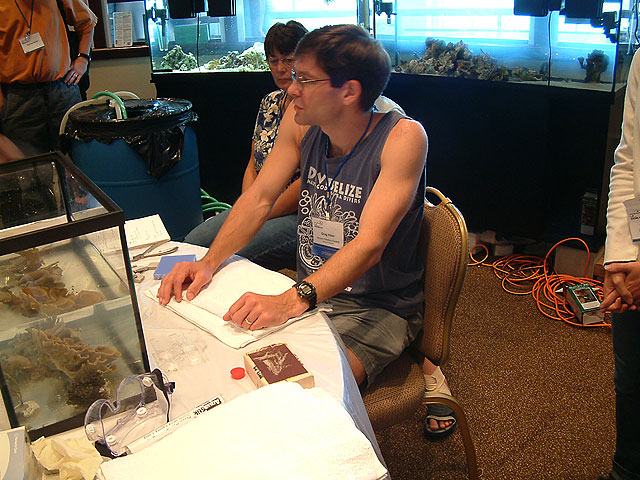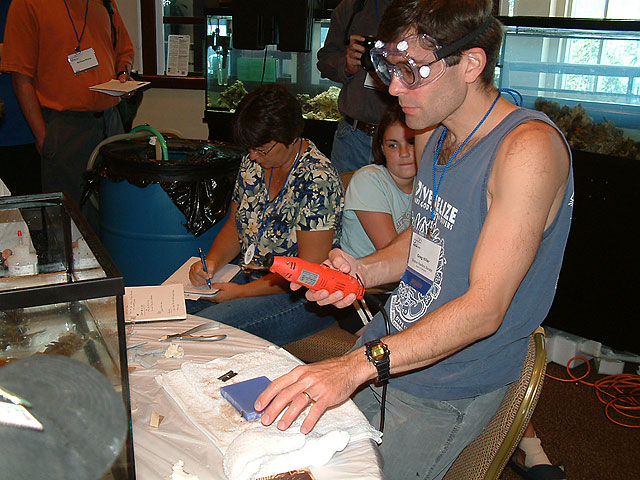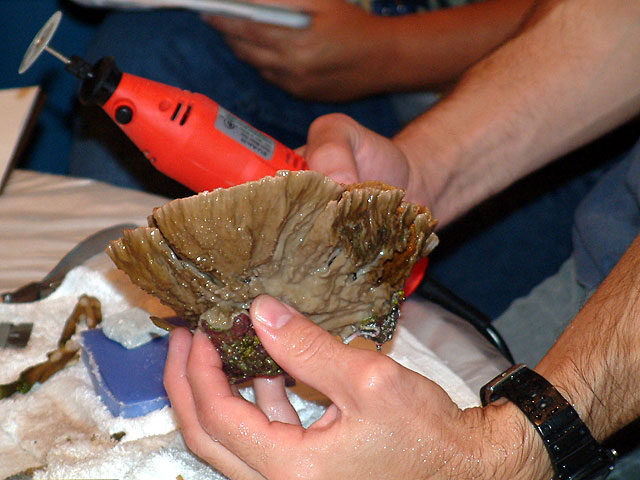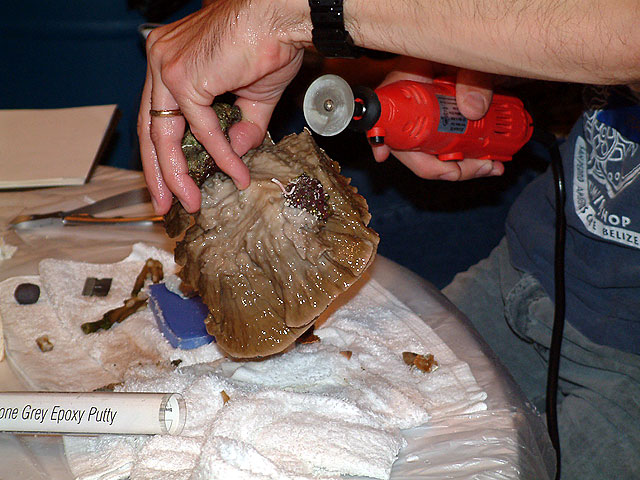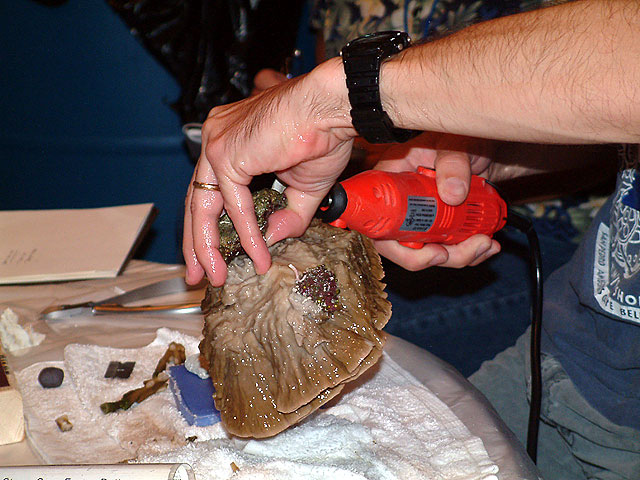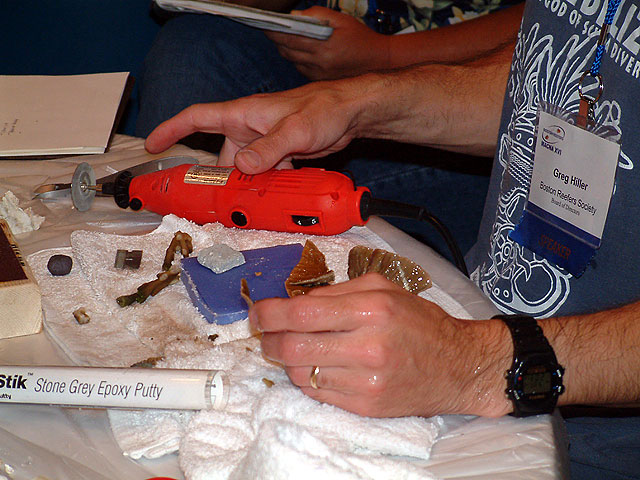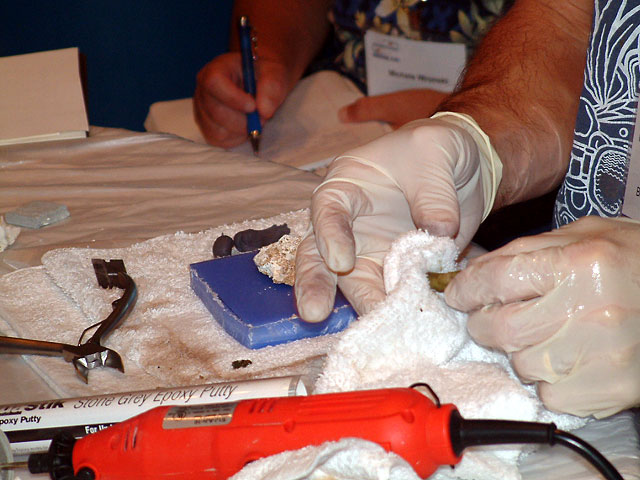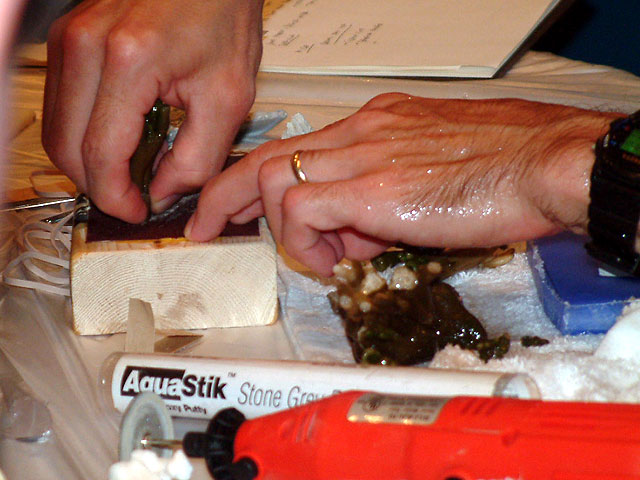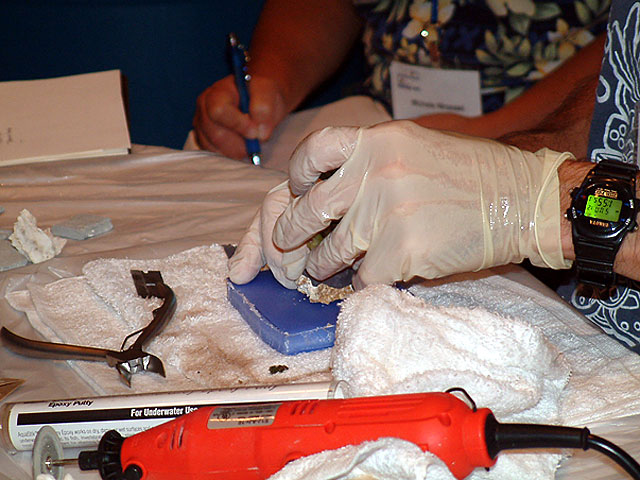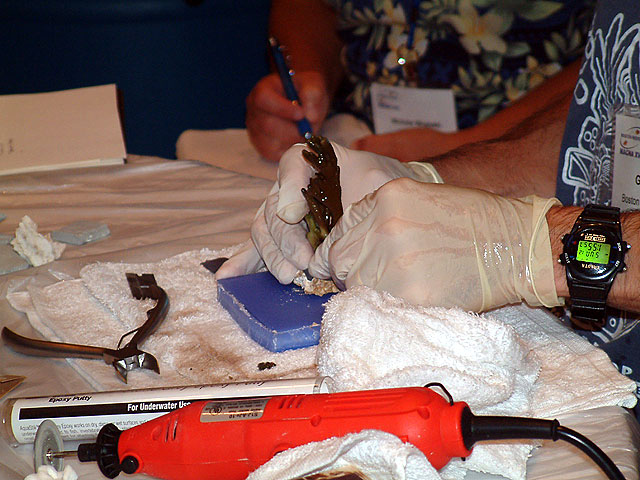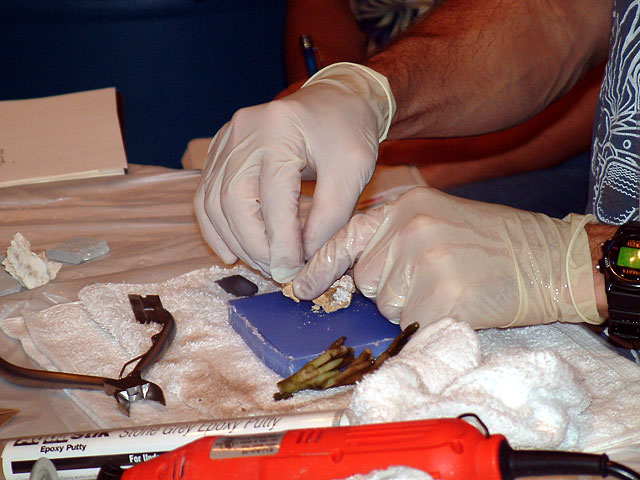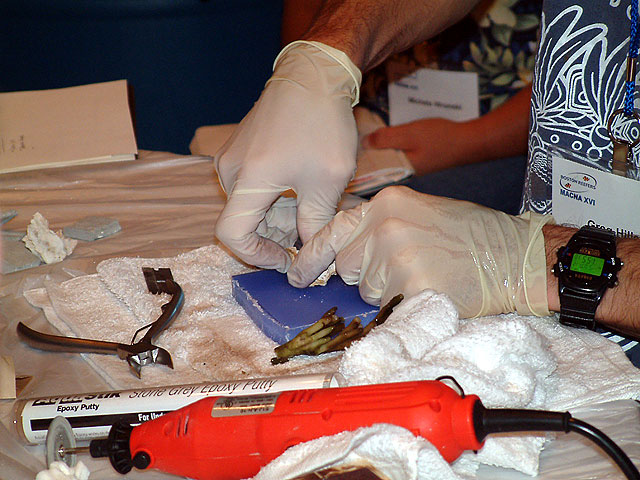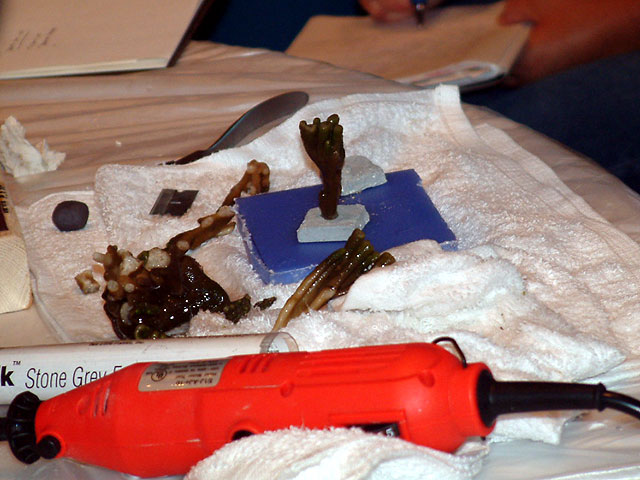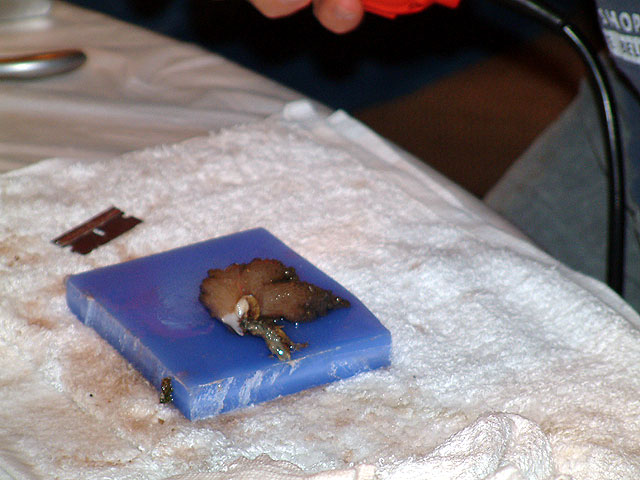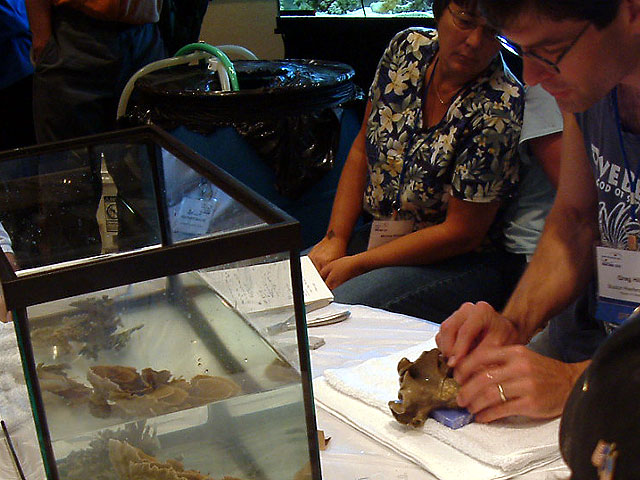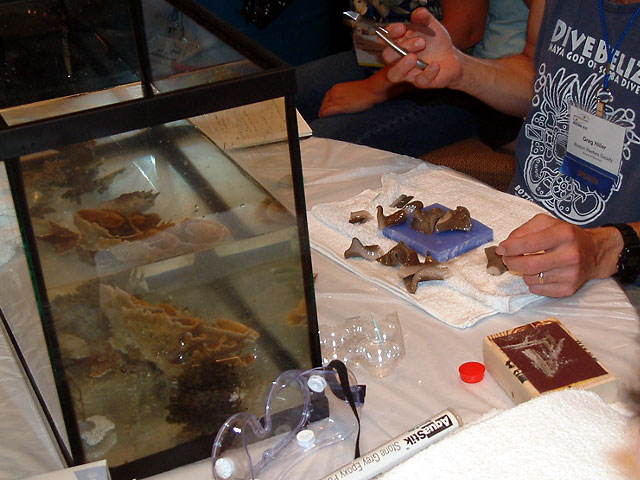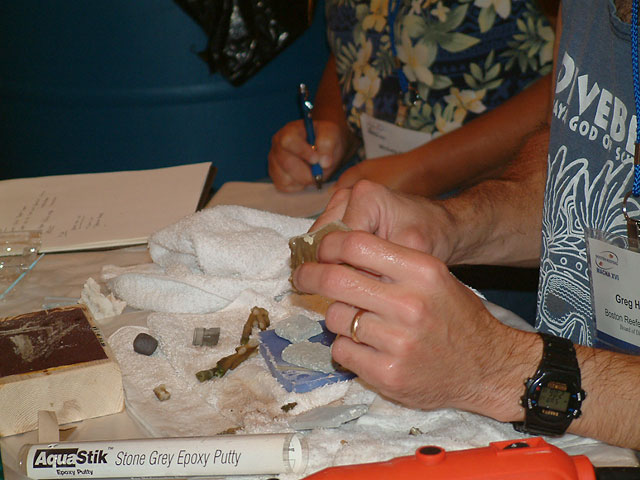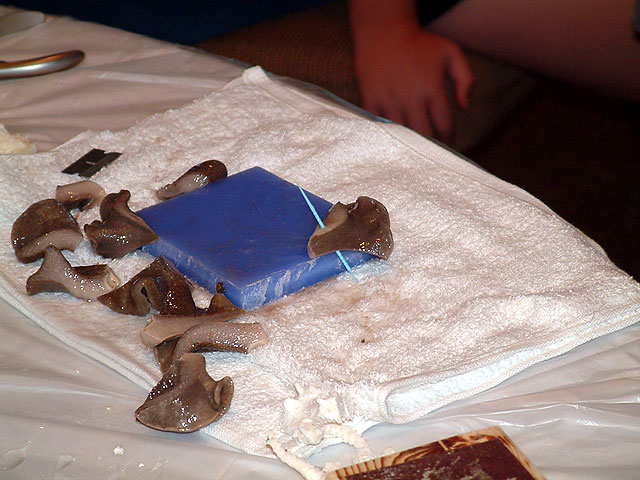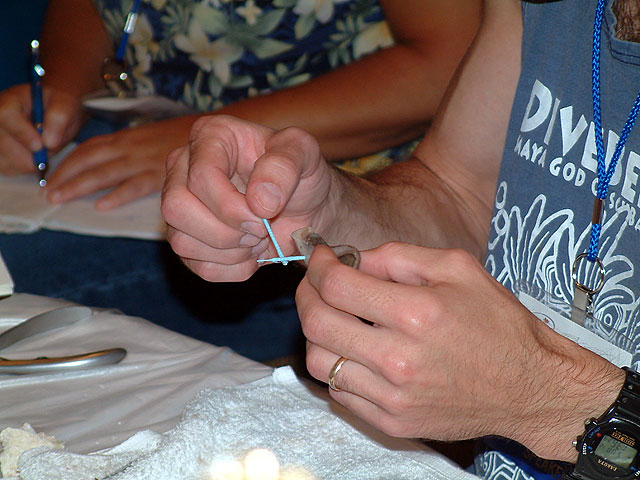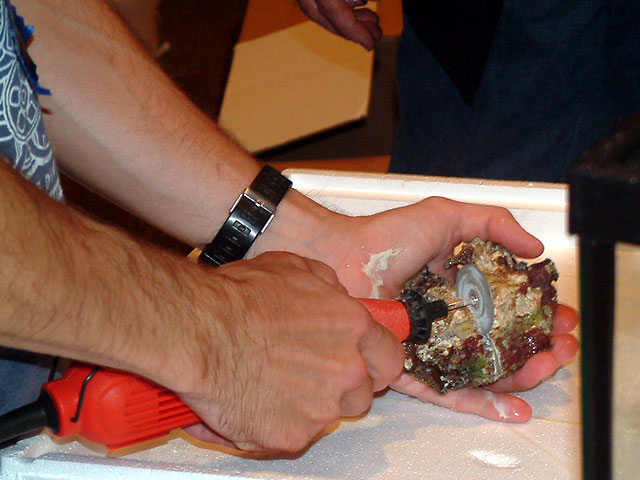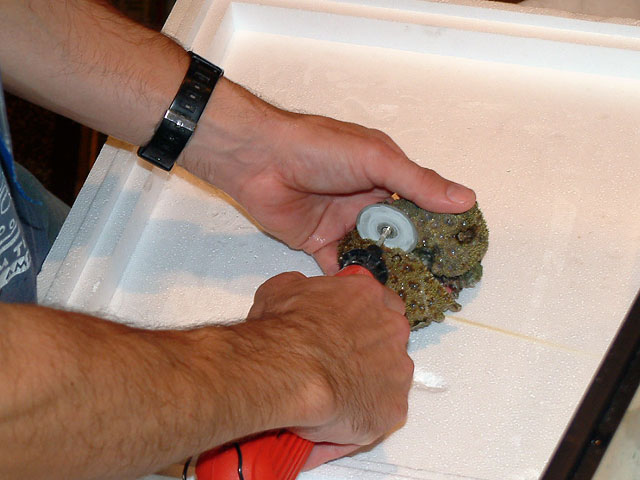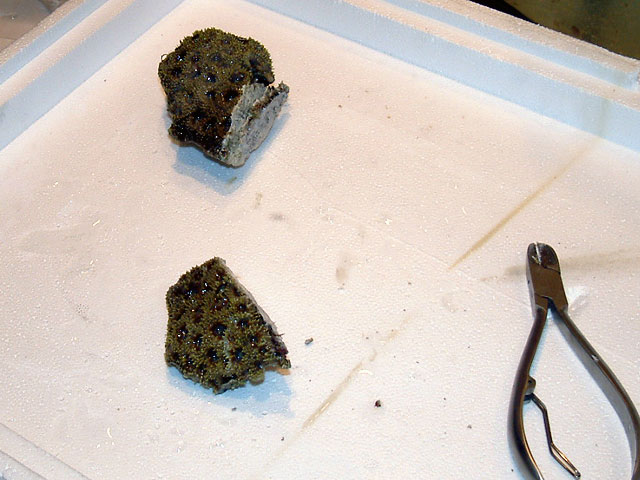Frag workshop
Greg Hiller, member of the Boston Reefers Society, took the time
to conduct the Frag Workshop. Attendees not
Greg had his workspace laid out, with the tools necessary nearby. The tank held some of the corals he'd work with.
A dremel tool with a rotary diamond cutting wheel is well worth the money, as it can be used in many applications.
Fragging a Montipora capricornis isn't hard to do. We often break them while working in our tanks.
However, using a dremel tool, you can create nice clean cuts, which
Using a cutting wheel, it doesn't take long to cut through the coral's skeletal mass.
Pieces are mounted on small home-made concrete pads.
Here is a frag of Montipora digitata, that was blotted off to dry the end that will be glued.
First it was run across a piece of sandpaper a few times to make a smooth base.
A quick test to make sure it will stand on the concrete pad.
The pad had a couple of drops of accellerator placed upon it, then the frag had a blob of super glue gel put upon it.
Holding the piece in place for 5 seconds was all it took. The accellerator speeds up the glue time from 45 seconds to just a few.
Ready to go back in the water.
This is a piece of soft coral. It can be cut with a straight edge
razor blade, and secured to a piece of rock with the
A leather coral is cut complete through the base. The base goes back in the tank, as it will regrow the crown.
The top section was cut into multiple small pieces.
Here, he pokes a toothpick through a section of the frag.
This piece is ready to mount.
Applying super glue gel to the toothpick on each end, it was glued to a piece
of rockwork. The toothpick keeps it
This is a more difficult piece, an Acanthastrea. This LPS was either on or
grew a very dense piece of rock.
Cutting first the base as deeply as the tool could reach, he then flipped it over to cut from the top.
Voilà. Two corals instead of one. |
